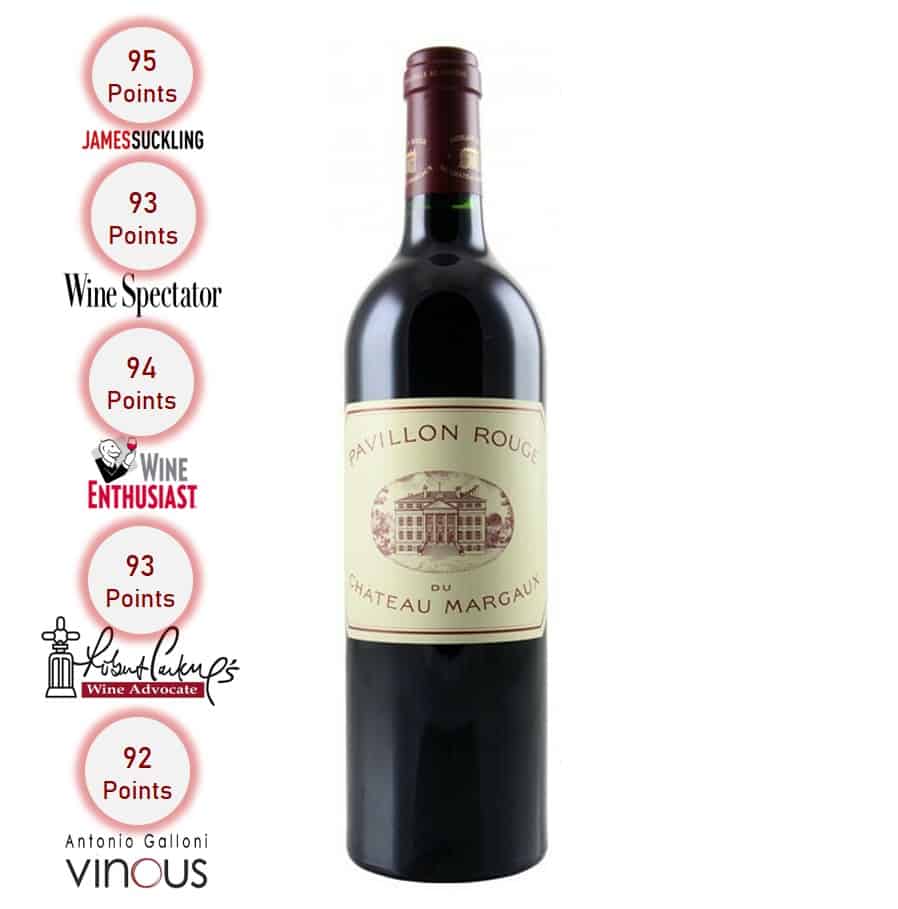75cl / 14%
“Margaux’s 2016 Pavillon Rouge is a gorgeous, precise wine that will offer plenty of drinking pleasure right out of the gate.
Bright red cherry fruit, sweet tobacco and dried herbs are all laced together in this finely-knit, inviting wine. Hints of blood orange and mint add an attractive upper register.
In 2016, Pavillon Rouge stands out for its persistence and impeccable balance.”
~ Antonio Galloni, Vinous
RM1,760.00
Colour: Medium to deep garnet-purple
Aroma: Bursts forth with exuberant Morello cherries, black raspberries and cassis scents accented by touches of menthol, dark chocolate and garrigue plus a waft of tree bark.
Palate: Balance, finesse, refinement is its mantra. The palate is medium-bodied, very elegant, vivacious and fresh with satiny tannins and a nice long finish.
Grape Varieties: 84% Cabernet Sauvignon, 13% Merlot and 3% Petit Verdot
Awards: 93pts – Wine Spectator; 94pts – Wine Enthusiast; 93pts – Wine Advocate-Parker; 92pts – Vinous; 95pts – James Suckling
Château Margaux was known since the XII century, it was called “La Mothe de Margaux” (the Margaux mound) and, at that time, it didn’t have any vines. The old name didn’t happen by chance; in a flat region like the Médoc, the slightest “mound” was easily distinguished and the greatest wines are always produced on sloping land that ensures good drainage.
The successive owners of “La Mothe de Margaux” were, of course, important lords but we had to wait for the arrival of the Lestonnac family to set up the estate as we know it today. Pierre de Lestonnac succeeded, in the ten years from 1572 to 1582, in completely restructuring the property as well as the vineyard and anticipated the general evolution of the Médoc that had started to abandon cereal growing in favour of vines. At the end of the 17th century, Château Margaux occupied 265 hectares, land that wouldn’t be divided again. A third of the estate was dedicated to vines, which is still the case today.
At the beginning of the 21st century, Bordeaux wines are experiencing unprecedented success. This prosperity, as well as the rapid expansion of other regions in the world, has placed Château Margaux in a more competitive climate, and also allowed the underlining of its unique position: that of a First Growth classified in 1855, enjoying a terroir that has been shaped by the passing centuries.

| Brand | |
|---|---|
| Return Policy | Non-Returnable : This product is non-returnable due to exclusivity/consumable nature of the product. |
| SID | D02B |
| Country | Bordeaux, France |
| Product Type | Red |
| Grape Variety | Cabernet Sauvignon |
Discover our diverse range of flavourful alternatives, ready to surprise and delight your palate.
Industry-leading security powered by iPay88 & Stripe.
Besides Visa & Mastercard, we also accept T&G, Grab, and other eWallets
Unleash your passion for wine and spirits! Join our community of enthusiasts for insider perks, early access to new arrivals, free tastings, exclusive events, discounts, and unforgettable wine experiences.
Become a MyWine Club member today!
A curated website for fine wines, spirits, cigars, food and unique dining experiences too.
Click HERE to find out how to list your event on DiineOut.com or please contact our Hotline (Whatsapp Only): +6018-201 2821.